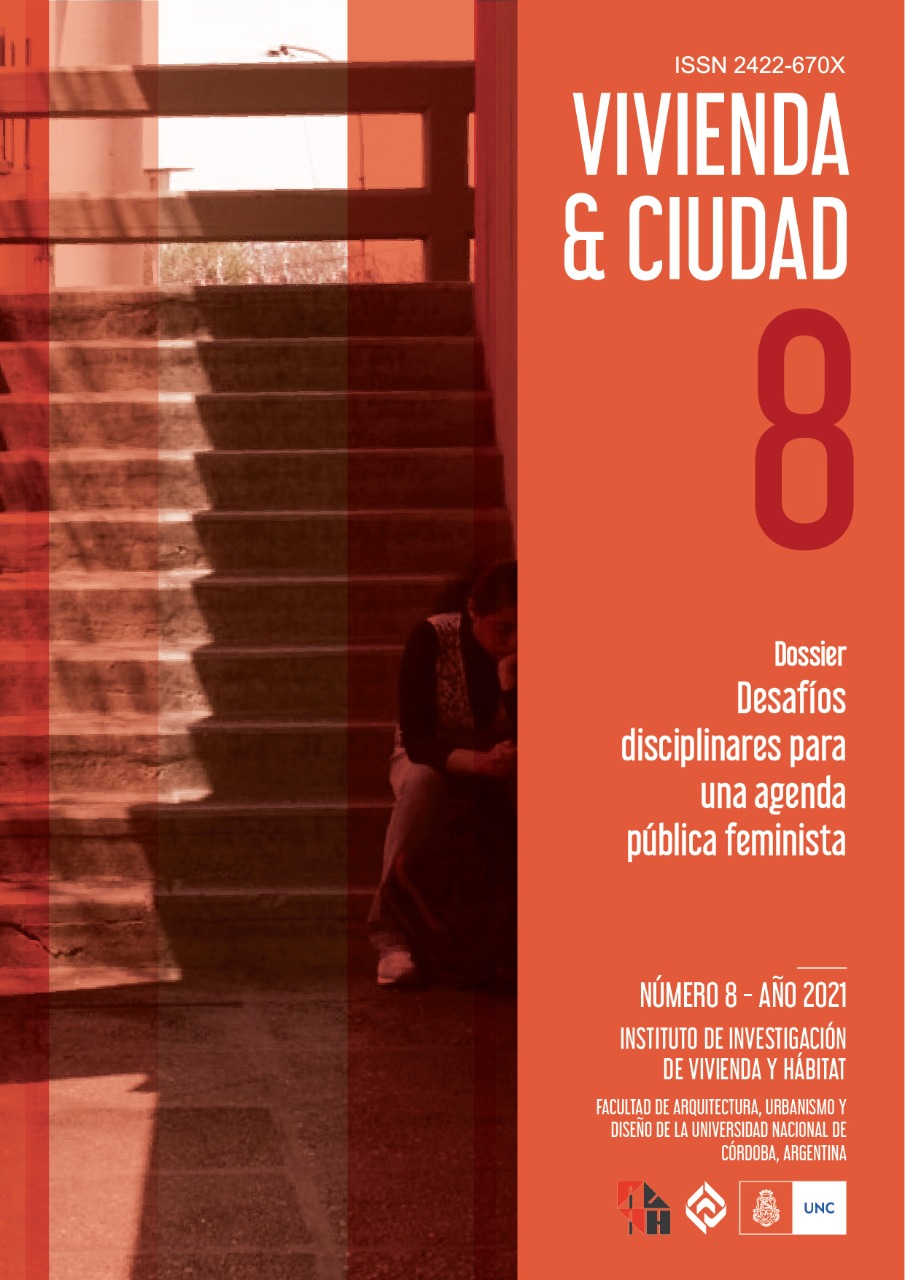The territory of the home.
First approaches to the daily practices of women in contexts of energy poverty.
Keywords:
House, Home, Energy poberty, WomenAbstract
The “home” constitutes an indispensable point of inclusion that goes beyond the limits of the built space and also affects the spheres of the reproduction of life and the care work of peoples. Then, it is essential for the exercise of other rights, such as those related to energy access, education, work and health, political and social participation. It is not by chance, therefore, that the “house” has historically been a place of claims, disputes and resistance led mainly by women (Jelin, 2010). In this article we propose to look at the daily experiences of women in a context of energy poverty, from the material and symbolic dimensions of the domestic space. We consequently analyze not only the conditions and material conditioning factors of the dwellings and their link with energy poverty, but also how these households are made up, how energy expenditures are done, how uses and consumption are ranked, what are the strategies that women deploy to withstand these conditions and the senses that are configured around their practices and their homes.
References
Álvarez Leguizamón, S. (2017). Formas de racismo indio en Argentina y configuraciones sociales de poder. Prohistoria Ediciones.https://www.academia.edu/37449443/Formas_de_racismo_indio_en_la_Argentina_y_configuraciones_sociales_de_poder
Bourdieu, P. (1999). La miseria del mundo. Akal.
Calvo, R., Álamos, N., Billi, M., Urquiza, A., Contreras Lisperguer, R. (2021). Desarrollo de los indicadores de la pobreza energética en América Latina y el Caribe. Editorial Cepal.https://www.cepal.org/es/publicaciones/47216-desarrollo-indicadores-pobreza-energetica-america-latina-caribe
Castelano Caruana, M. y Méndez, F. (2019). La pobreza energética desde una perspectiva de género en hogares urbanos de la Argentina. Revista Saberes, 11 (2), 133-151 https://ri.conicet.gov.ar/handle/11336/119537
Cejas, N. (2013) Aportes a la comprensión de procesos de comunicación en prácticas de co-construcción interactoral de tecnología social. Revista Perspectivas de la Comunicación 6 (2), 28-39.https://ri.conicet.gov.ar/bitstream/handle/11336/4281/158-578-1-PB.pdf?sequence=1&isAllowed=y
Durán, R. (2019). Evaluación de aspectos socioculturales para la planificación regional e implementación de energías renovables en Salta. [Tesis doctoral. Universidad Nacional de Salta] https://ri.conicet.gov.ar/handle/11336/144920
Germani, G. (1973) El concepto de marginalidad. Nueva Visión
Gutiérrez, A. (2015). Pobre´…como siempre. Estrategias de reproducción social en la pobreza. Eduvim. https://consejopsuntref.files.wordpress.com/2017/08/gutierrez-pobre-como-siempre.pdf
Jelin, E. (2010). Pan y afectos. La transformación de las familias. Buenos Aires: Fondo de Cultura Económica. https://catedralibrets.files.wordpress.com/2015/05/jelin-pan-y-afectos.pdf
Okushima, Sinichiro y Tamura, Macoto (2011). Identifying the Sources of Energy Use Change: Multiple Calibration Decomposition Analysis and Structural Decomposition Analysis, Structural Change and Economic Dynamics, 22 (pp. 313-326)
Paz, J. y Arévalo, C. (2021). Pobreza en hogares con jefatura femenina en Argentina. Una comparación entre el Norte Grande y el resto del país. Visión de Futuro 25 (1). https://visiondefuturo.fce.unam.edu.ar/index.php/visiondefuturo/article/view/485/331
Sañudo Velez, L. (2013). La casa como territorio. Una nueva epistemología sobre el hábitat humano y su lugar doméstico. Iconofacto, 9(12),214-231. file:///C:/Users/antra/Downloads/Dialnet-LaCasaComoTerritorioUnaNuevaEpistemologiaSobreElHa-5204342.pdf
Sen, Amartya (1996). Capacidad y bienestar. En Nussbaum, M. y Sen, A. (Comp.). La calidad de vida (pp. 54-83). México: FCE.
Simcock, N. y Mullen, C. (2016). Energy demand for everyday mobility and domestic life: Exploring the justice implications. Energy Research and Social Science(18), 1-6.https://www.sciencedirect.com/science/article/pii/S2214629616301268
Vanoli, F. et al. (2018) Procesos Comunicacionales en la producción de hábitat: tres inflexiones para un abordaje decolonial. Question/Cuestión, 1(58), https://doi.org/10.24215/16696581e042
Vethencourt, F. (2008). La perspectiva de las capacidades de Amartya Sen. En Hernández, Á. (Comp.). El desarrollo como problema ¿igualdad de qué?, (pp. 19-34).
Downloads
Published
Issue
Section
License
Copyright (c) 2021 Cinthia Natalia Gonza

This work is licensed under a Creative Commons Attribution-ShareAlike 4.0 International License.
Authors who publish in this journal agree to the following terms:
a. Authors retain copyright and guarantee to the journal the right to be the first publication of the work as well as licensed under a Creative Commons Attribution-ShareAlike 4 license.
b. Authors may separately establish additional agreements for non-exclusive distribution of the version of the work published in the journal (e.g., placing it in an institutional repository or publishing it in a book), with an acknowledgement of its initial publication in this journal.
c. Authors are permitted and encouraged to disseminate their work electronically (e.g., in institutional repositories or on their own website) before and during the submission process, as this may result in productive exchanges, as well as earlier and greater citation of published work (See The Effect of Open Access).
d. 4.0 International Creative Commons Attribution-ShareAlike 4.0 License.










